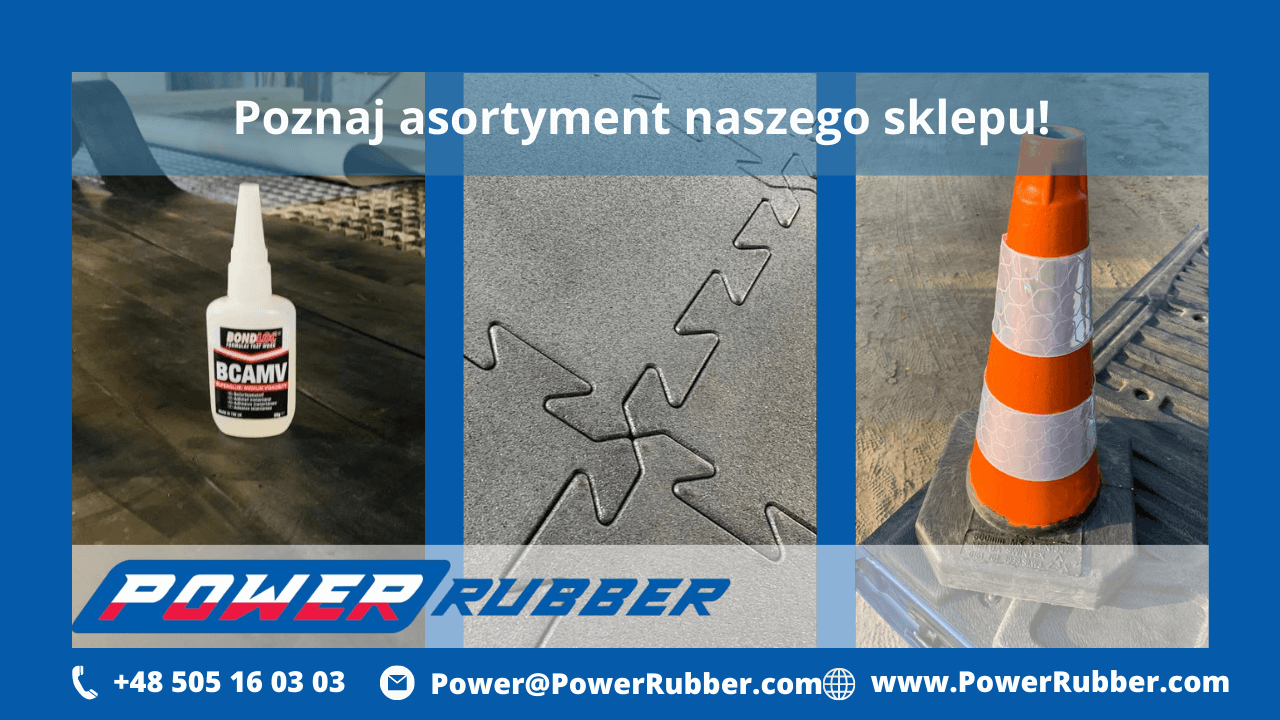Wibroizolatory - Oferta Producenta Power Rubber
Uderzenia, hałas i zjawisko wibracji negatywnie wpływa na prawidłową pracę, wytrzymałość i żywotność maszyn i ich podzespołów, a także na zdrowie osób, które je obsługują.
Wibroizolatory to specjalnie zaprojektowane elementy tłumiące drgania i wstrząsy, które montuje się pomiędzy podłożem a podstawą maszyny.
Wdrożenie środków zapobiegających przenoszeniu drgań z jednego elementu na drugi jest kluczowe. Wibroizolatory oferowane przez Power Rubber redukują szkody spowodowane wibracjami, chroniąc urządzenia i podzespoły przed uszkodzeniami układów mechanicznych. Instalacja wibroizolatora przedłuża żywotność i bezawaryjną pracę maszyny. Elementy antywibracyjne skutecznie ograniczają również emisję uciążliwego hałasu
Wibroizolatory – Oferta Producenta Power Rubber
Posiadamy największy wybór wibroizolatorów, które zostały specjalnie zaprojektowane, aby zapewnić wysoką izolację drgań, zarówno przy obciążeniach ściskających, ścinających, jak i kombinacji tych dwóch.
Wibroizolator powszechnie produkowany jest z gumy lub połączenia gumy i innych materiałów (np. wibroizolatory są wykonane ze stali galwanizowanej oraz zróżnicowanych mieszanek gumowych). Zadbaliśmy o ich produkcję w kilku wielkościach oraz na różne obciążenia, zarówno ze zróżnicowanym gwintem M, jak i zmiennymi wymiarami szerokości, długości, głębokości otworów oraz długości elementów gwintowanych.
Posiadamy szeroki asortyment, co pozwala na dopasowanie odpowiednich wibroizolatorów do konkretnych zastosowań.
Wibroizolatory Power Rubber to gwarancja:
- ochrony maszyn przed nadmiernym zużyciem (wydłużenie żywotności)
- redukcja poziomu hałasu
- odseparowanie podzespołów wrażliwych na drgania
- skutecznie tłumią wibracje i ich negatywne skutki
Wibroizolatory – rodzaje:
- cylindryczne (wibroizolatory walcowe)
- wibroizolatory kołnierzowe
- talerzowe
- taliowane
- paraboliczne
- daszkowe i bezdaszkowe
- ze stopów stalowych
- ze stali nierdzewnej
Na rynku można znaleźć również wibroizolatory linowe i sprężynowe. 
Pełna oferta Wibroizolatorów wystarczy kliknąć
Podkładki antywibracyjne pod urządzenia i elementy maszyn - Montaż
W zależności od rodzaju amortyzatora, montuje się go do elementów maszyny lub konstrukcji poprzez gwintowane otwory przelotowe. Przykładowo: wibroizolator można zamontować poprzez wsunięcie go w otwory podstawy maszyny, po czym należy ją odpowiednio wypoziomować obracając śruby zgodnie ze wskazówkami zegara, a następnie dokręcić nakrętkę kontrolującą. Niedopuszczalny jest montaż poprzez pokręcanie wibroizolatorem.
Wibroizolator gumowy (gumowo - metalowy) - Typy
Wyróżniamy 5 podstawowych odmian amortyzatorów, które spotykane są najczęściej:
- typ A (wibroizolator typu A ma dwie śruby, dwa gwinty zewnętrzne, tzw. męski-męski)
- typ B (jedną śrubę i jeden otwór nagwintowany, jeden gwint i jeden otwór, tzw. męsko-damski )
- typ C (ma dwa otwory na śrubę, tzw. damski-damski)
- typ D (jedna śruba, jeden gwint, tzw. męski-płaski)
- typ E (jeden otwór na śrubę, tzw. damsko-płaski)
Wibroizolatory typu A, B, C, D, E dostosowane są do pracy w różnych warunkach i temperaturze. Różnią się pod względem materiału, z którego są wykonane, kształtu i sposobu łączenia. Ich konstrukcja pozwala uzyskać sztywność pod obciążeniem (np. w miejscach, gdzie występują duże siły dynamiczne), skutecznie pochłaniając i zmniejszając drgania.
Wibroizolatory są wykorzystywane w różnych gałęziach przemysłu do różnych rodzajów maszyn. Odbojniki są odpowiednie do izolacji drgań silników, przekładni, wałów, zawieszenia. Doskonale sprawdzają się w przypadku nożyc, prac, obrabiarek do metalu i drewna, pomp, sprężarek, wentylatorów i in.
Właściwy dobór oraz równomierne obciążenie wibroizolatorami, a także właściwe osadzenie ich na maszynie gwarantuje skuteczność i wydajność pracy oraz redukcję wibracji.
W Power Rubber mamy bogatą wiedzę i wieloletnie doświadczenie w branży. Doradzimy w doborze właściwych wibroizolatorów, uwzględniając rodzaj maszyny, grubość jej postawy, rodzaj i ilość otworów w podstawie, ciężar całkowity, a także częstotliwość drgań własnych. Skupimy się również na warunkach, w których wibroizolatory będą pracowały.
Wibroizolatory – Zastosowanie:
Zastanawiając się nad pytaniem: Gdzie są stosowane wibroizolatory? Możemy wskazać następujące miejsca:
- sprzęt audio
- sprężarki i pompy
- klimatyzatory i wentylatory
- systemy komputerowe
- urządzenia elektroniczne
- aparatury kontrolno-pomiarowe
Jakie cechy posiadają wibroizolatory Power Rubber?: mała wysokość, mała sztywność pionowa i poprzeczna, zapewniają wysoką wytrzymałość. Wykonane są z elastycznych materiałów, które gwarantują odpowiednie właściwości tłumiące.
Oferujemy bezpieczny montaż urządzenia do posadzki za pomocą otworów montażowych. Wybierz więc wibroizolatory Power Rubber i skutecznie niweluj drgania urządzeń i ich hałas!
Poznaj również nasze inne wyroby gumowe: talerze do Crossfit, maty, płyty, sznury, oringi i in.
Zapraszamy do kontaktu telefonicznego: +48 22 292 40 24 lub +48 50 516 03 03, bądź mailowego (power|powerrubber.com| |Power|PowerRubber.com) lub przez nasz formularz kontaktowy






